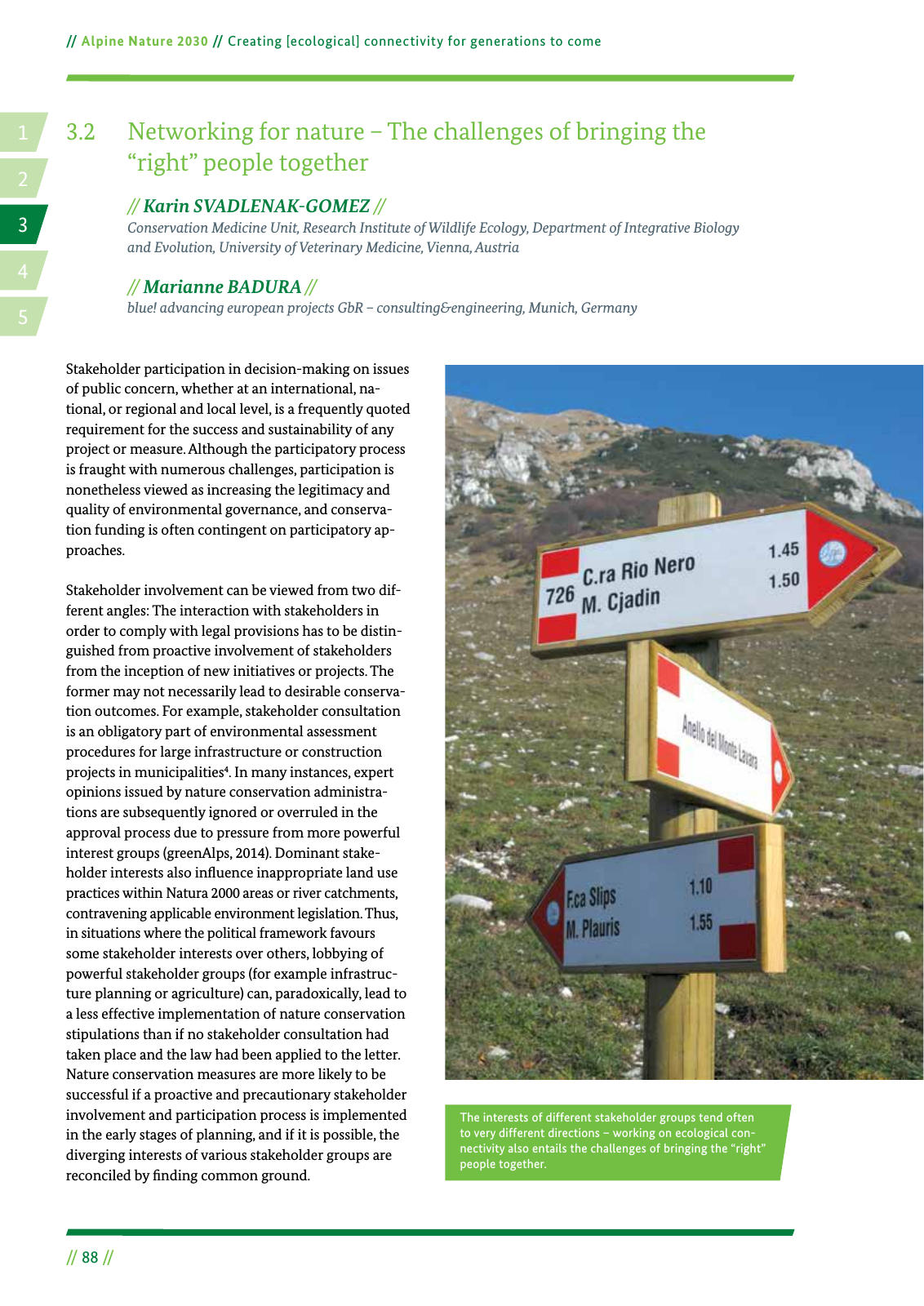14 2 5 3 Alpine Nature 2030 Creating ecological connectivity for generations to come 88 3 2 Networking for nature The challenges of bringing the right people together Karin SVADLENAK GOMEZ Conservation Medicine Unit Research Institute of Wildlife Ecology Department of Integrative Biology and Evolution University of Veterinary Medicine Vienna Austria Marianne BADURA blue advancing european projects GbR consulting engineering Munich Germany Stakeholder participation in decision making on issues of public concern whether at an international na tional or regional and local level is a frequently quoted requirement for the success and sustainability of any project or measure Although the participatory process is fraught with numerous challenges participation is nonetheless viewed as increasing the legitimacy and quality of environmental governance and conserva tion funding is often contingent on participatory ap proaches Stakeholder involvement can be viewed from two dif ferent angles The interaction with stakeholders in order to comply with legal provisions has to be distin guished from proactive involvement of stakeholders from the inception of new initiatives or projects The former may not necessarily lead to desirable conserva tion outcomes For example stakeholder consultation is an obligatory part of environmental assessment procedures for large infrastructure or construction projects in municipalities4 In many instances expert opinions issued by nature conservation administra tions are subsequently ignored or overruled in the approval process due to pressure from more powerful interest groups greenAlps 2014 Dominant stake holder interests also in uence inappropriate land use practices within Natura 2000 areas or river catchments contravening applicable environment legislation Thus in situations where the political framework favours some stakeholder interests over others lobbying of powerful stakeholder groups for example infrastruc ture planning or agriculture can paradoxically lead to a less effective implementation of nature conservation stipulations than if no stakeholder consultation had taken place and the law had been applied to the letter Nature conservation measures are more likely to be successful if a proactive and precautionary stakeholder involvement and participation process is implemented in the early stages of planning and if it is possible the diverging interests of various stakeholder groups are reconciled by nding common ground The interests of different stakeholder groups tend often to very different directions working on ecological con nectivity also entails the challenges of bringing the right people together

Hinweis: Dies ist eine maschinenlesbare No-Flash Ansicht.
Klicken Sie hier um zur Online-Version zu gelangen.
Klicken Sie hier um zur Online-Version zu gelangen.